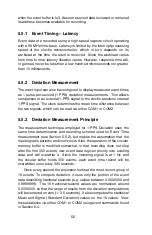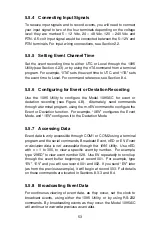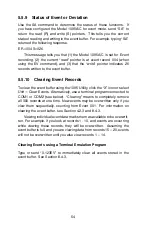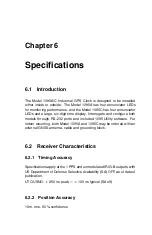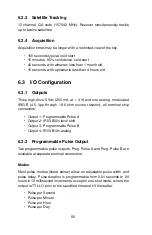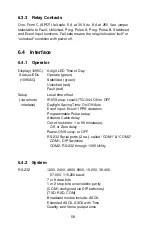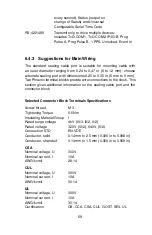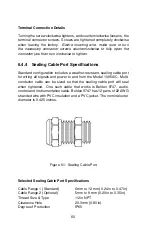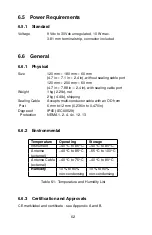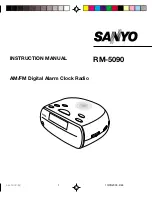
Prog Pulse Mode
Configured Feature
Pulse Per Second
Fractional seconds after on-time mark
Pulse Per Minute
Number of seconds after each minute
Pulse Per Hour
Number of seconds after each hour
Pulse Per Day
Hour, Minute, Second, Fractional Seconds
Single Trigger
Day, Hour, Minute, Second, Fractional Seconds
Slow Code
ON or OFF
Seconds Per Pulse
X number of seconds between pulses
Pulse Polarity
positive– or negative–going pulse
Table 5.3: Programmable Pulse Modes
5.4
Connecting Outputs
Make timing signal connections through the sealing cable port and
anchor using the terminal connectors on the left set of terminals (J2).
To adapt to a BNC style connector, you may use a BNC Breakout
, or
other similar adapter.
5.4.1
Wiring to Screw Terminals
To connect timing signals, the Model 1095A/C series clocks have two
rows of internal screw terminals (J1 and J2).
To mount wiring to
screw terminals, prepare the cable by stripping back at least 1/4" of the
insulation and any shielding, and DO NOT tin the bare wire with solder.
To attach wires to terminals, first loosen the screw counter-clockwise,
insert the wire, then turn clockwise to tighten. Ground the shield (if
present) to the GND (ground) connector on the clock board, rather than
the receiving end. See also Section 2.7.3.
5.4.2
How Far Can I Run IRIG-B Cabling?
Before laying cable to transmit IRIG-B over long distances, take time
to consider the following factors: (1) resistive losses in cabling, (2)
electromagnetic interference, (3) propagation delays and (4) installation
and maintenance costs.
For details on distributing IRIG-B signals over long distances, see
application note,
AN101, Distributing Timing Signals in a High-EMI
1
Pomona Electrics, www.pomonaelectronics.com, (800) 444-6785, (425) 446-6010,
part no. 4969 and 4970
47




















